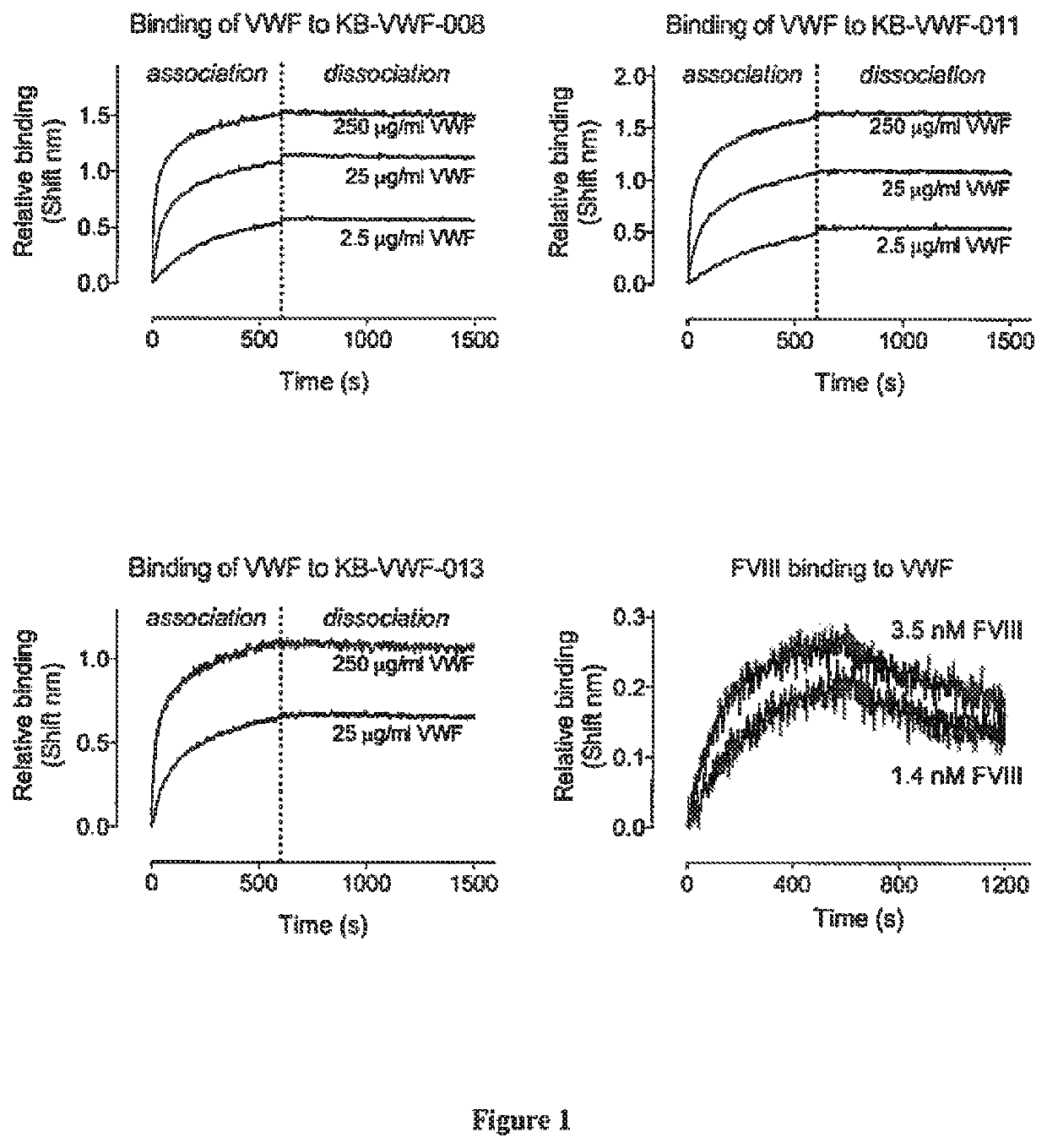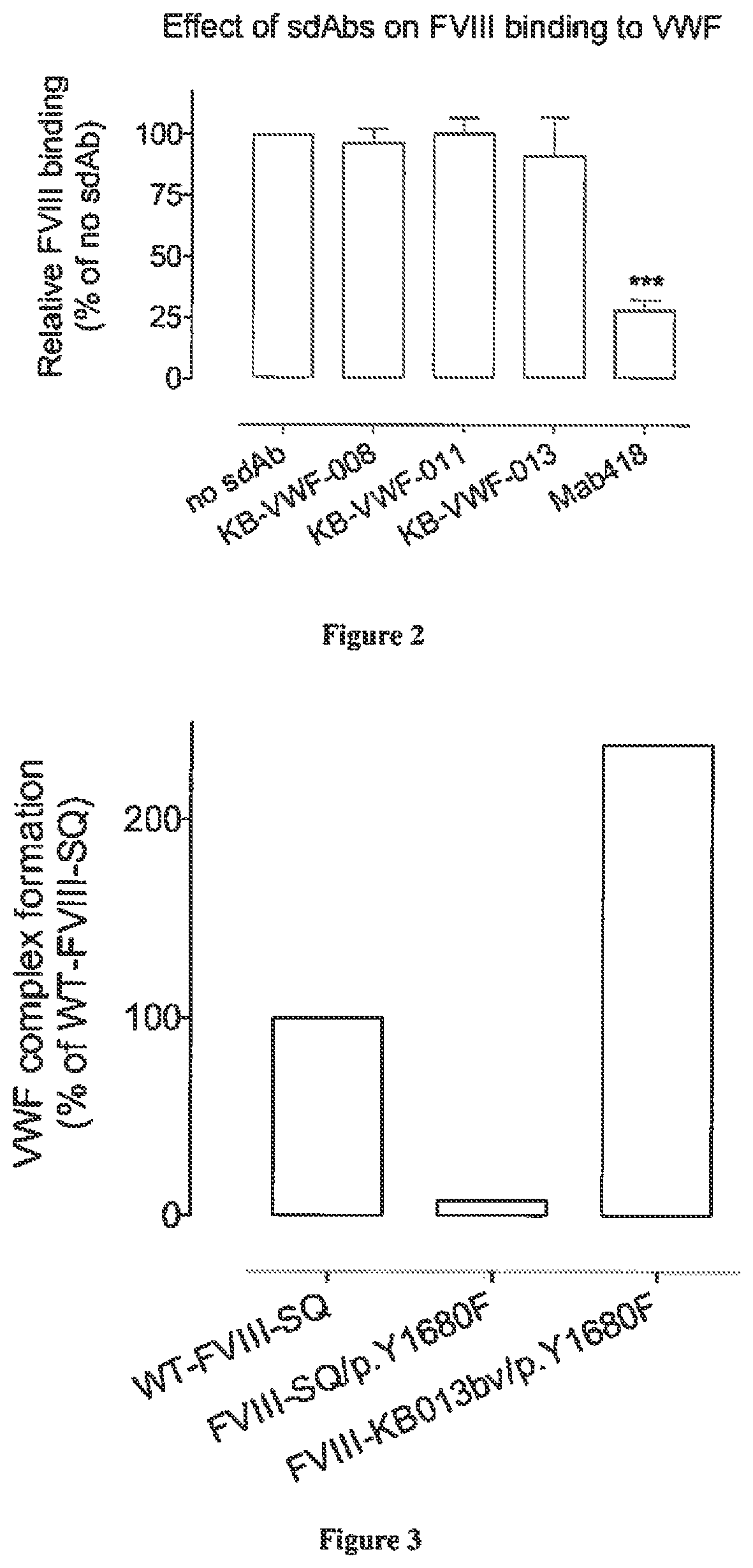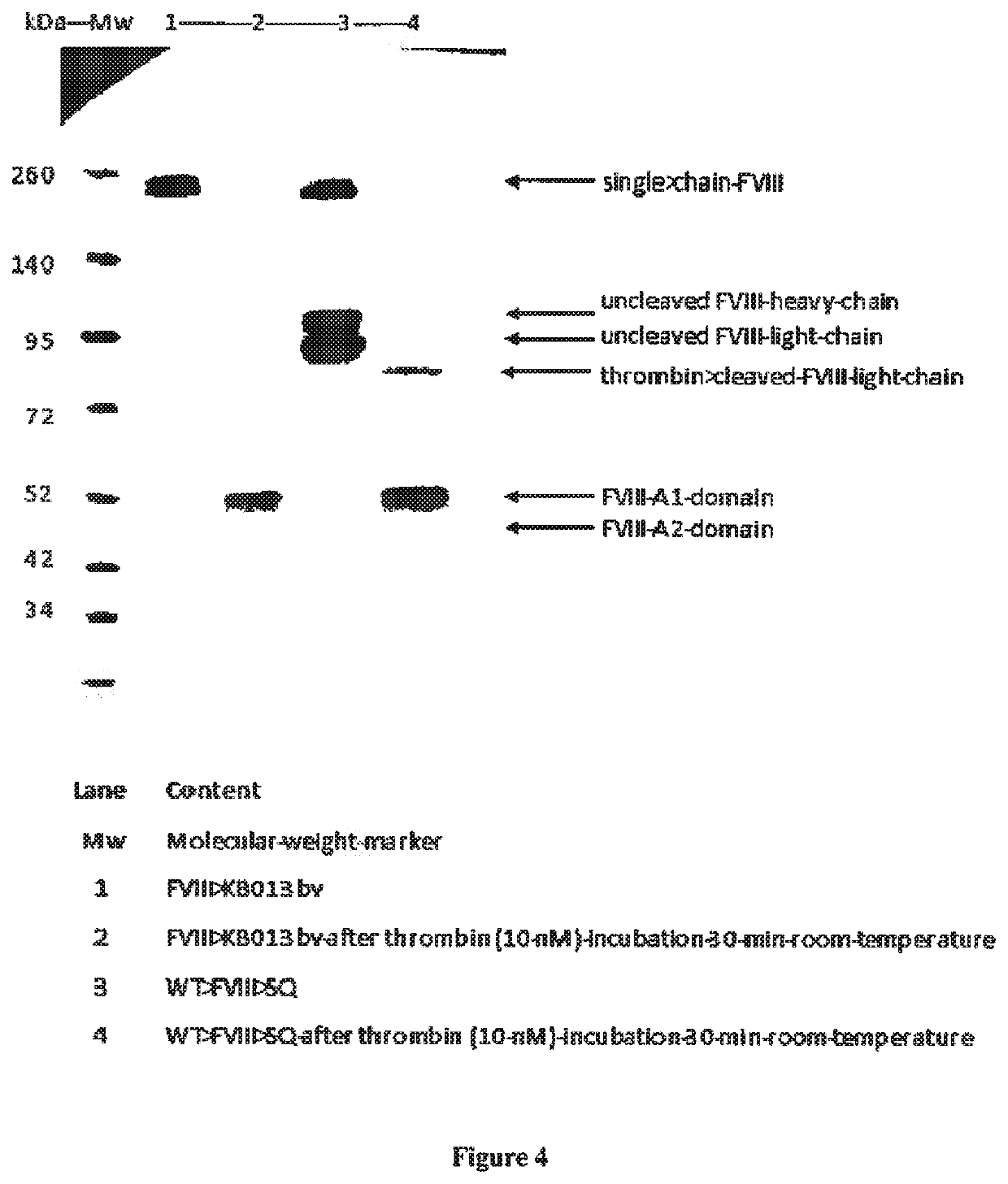Anti-VWF D'D3 single-domain antibodies and methods of use
a single-domain antibody and antibody technology, applied in the field of immunotherapy, can solve the problems of re-provisioning long-acting fviii products currently under development to have limited half-lives
- Summary
- Abstract
- Description
- Claims
- Application Information
AI Technical Summary
Benefits of technology
Problems solved by technology
Method used
Image
Examples
example a
omain Structure of VWF
[0125]Bio-informatic analysis of the cDNA and protein sequences of VWF has revealed that the protein architecture distinguishes different types of domain structures. Originally, this domain structure consisted of a signal peptide (SP), A-domains, B-domains, C-domains, D-domains and a CK-domain arranged in the order SP-D1-D2-D′-D3-A1-A2-A3-D4-B1-B2-B3-C1-C2-CK (Verweij C L et al. (1986) EMBO Journal, vol. 5, pp. 1839-1847). More recently an updated domain organization has been proposed, in which the domains are arranged in the following order SP-D1-D2-D′-D3-A1-A2-A3-D4-C1-C2-C3-C4-C5-C6-CK (Zhou Y F et al. (2012) Blood, vol 120. pp. 449-458). Since the boundaries of the different domains may be varying from one publication to another, we use in this application the boundaries as defined in FIG. 1 of Lenting P J et al. (2015) Blood, vol 125, pp. 2019-2028).
example b
f sdAb to VWF or Fragments Thereof
[0126]sdAbs KB-VWF-008, -011 and -013 were immobilized (5 μg / ml) in 10 mM NaHCO3, 50 mM Na2CO3 (pH 9.5) in a volume of 50 μl in half-well microtiter plates (Greiner Bio-One, Les Ulis, France) for 16 h at 4° C. As a positive control, polyclonal rabbit anti-VWF antibodies (Dalco, Glostrup, Danmark) were immobilized in a similar fashion. As a negative control, no antibodies were immobilized. After washing the wells three times with 75 μl / well using Tris-buffered saline (pH 7.6) supplemented with 0.1% Tween-20 (TBS-T), wells were blocked with 75 μl / well of TBS-T supplemented with 3% bovine scrum albumin (BSA) for 30 min at 37° C. Wells were washed as described above, and subsequently the following VWF preparations (diluted in Tris-buffered saline (pH 7.6) supplemented with 3% BSA, all at 2 μg / ml, 50 μl per well, 2 hours at 37° C.) were added to each of the immobilized sdAbs and both types of control wells:[0127]purified recombinant human VWF (rhVWF),[01...
example c
Analysis of Association and Dissociation of VWF Interactions with FVIII and sdAbs
[0138]The interaction between VWF and sdAbs was analyzed via bio-layer interferometry using Octet-QK equipment (Fortébio, Menlo Park, Calif., USA). To this end, sdAbs KB-VWF-008, -011 and -013 were diluted in 0.1 M Mes (pH 5.0) to a concentration of 10 μg / ml for coupling to EDC / NHS-activated amine-reactive biosensors (Fortébio, Menlo Park, Calif., USA). Sensors were rehydrated in 0.2 ml 0.1 M MES. pH 5.0 for 300 sec. Sensors were then activated via incubation with 0.1 ml 02 M EDC / 0.095 M NHS mixture for 300 sec and subsequently incubated with 0.1 ml sdAb-solution for 600 sec. Unoccupied amine-reactive sites were quenched by incubating with 1M ethanolamine for 180 sec, and sensors were allowed to reach stable baseline levels via incubation with phosphate-buffered saline supplemented with 0.1% Tween-20 (PBS-T) for 300 sec. sdAb-coated sensors were then transferred to wells containing various concentration...
PUM
| Property | Measurement | Unit |
|---|---|---|
| volume | aaaaa | aaaaa |
| pH | aaaaa | aaaaa |
| pH | aaaaa | aaaaa |
Abstract
Description
Claims
Application Information
 Login to View More
Login to View More - R&D
- Intellectual Property
- Life Sciences
- Materials
- Tech Scout
- Unparalleled Data Quality
- Higher Quality Content
- 60% Fewer Hallucinations
Browse by: Latest US Patents, China's latest patents, Technical Efficacy Thesaurus, Application Domain, Technology Topic, Popular Technical Reports.
© 2025 PatSnap. All rights reserved.Legal|Privacy policy|Modern Slavery Act Transparency Statement|Sitemap|About US| Contact US: help@patsnap.com



